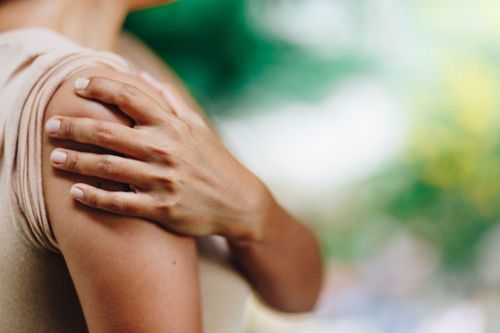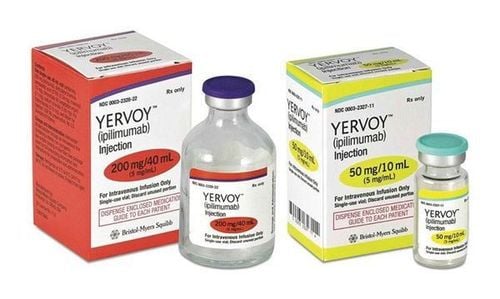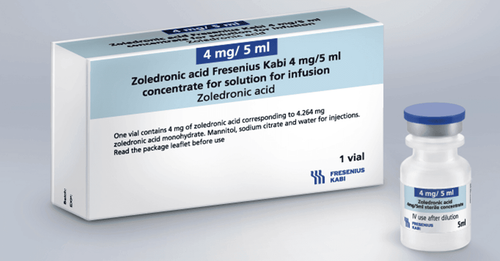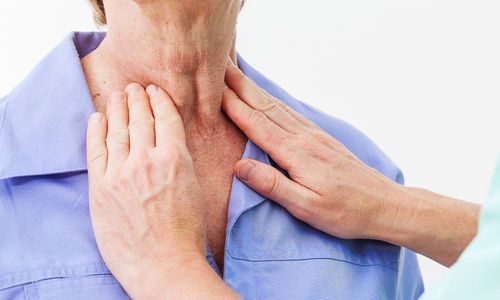This is an automatically translated article.
Skin cancers include melanoma, basal cell carcinoma, and squamous cell carcinoma. The disease usually begins with changes in the skin. They can be new growths or precancerous lesions. Skin cancer detected early can be cured.1. Skin cancer
Skin cancer is an abnormal growth of skin cells that most commonly develops on sun-exposed skin. These common forms of cancer can also occur in areas of your skin that are not exposed to sunlight.
There are three main types of skin cancer - basal cell carcinoma, squamous cell carcinoma, and melanoma.
You can reduce your risk of skin cancer by limiting or avoiding exposure to ultraviolet (UV) rays. Checking your skin for suspicious changes can help detect skin cancer in its earliest stages. Detecting skin cancer early gives you the best chance for successful skin cancer treatment.

Ung thư biểu mô tế bào vảy là một loại ung thư da thường gặp
2. Causes of skin cancer
Skin cancer occurs when errors (mutations) occur in the DNA of skin cells. Mutations cause cells to grow out of control and form a mass of cancer cells.
Skin cancer starts in the top layer of your skin - the epidermis. The epidermis is a thin layer that provides a protective sheath to skin cells that your body is constantly shedding off. The epidermis contains three main types of cells:
Squamous cells lie just below the outer surface and act as the inner lining of the skin. The basal cells, which give rise to new skin cells, are located underneath the squamous cells. Melanocytes - which produce melanin, the pigment that gives normal skin color - are located in the lower part of your epidermis. Melanocytes produce more melanin when you're out in the sun to help protect the deeper layers of the skin. Where your skin cancer begins determines its type and your treatment options.

Tia cực tím có thể gây ra tình trạng ung thư da
Ultraviolet rays and other potential causes: Much of the damage to DNA in skin cells is caused by ultraviolet (UV) radiation found in sunlight and in the light used in bed sunbathing. But sun exposure does not explain skin cancers that develop on skin that is not regularly exposed to sunlight.
This indicates that other factors may contribute to your skin cancer risk, such as exposure to toxic substances or having a condition that weakens your immune system.
3. Factors that may increase the risk of skin cancer
3.1. Exposure to UV rays
UV exposure is a major skin cancer risk factor for most melanomas. Sunlight is the main source of UV rays. Tanning beds and solar lamps are also sources of UV rays.
Although UV rays make up only a very small part of the sun's rays, they are the main cause of sun damage to the skin. UV rays damage the DNA (genes) inside skin cells. Skin cancer can begin when this damage affects the DNA of genes that control skin cell growth.
When UV rays reach the inner skin layer, the skin produces more melanin. Melanin is the pigment that gives skin color. It moves towards the outer layers of the skin and becomes as obvious as a tan.

Thường xuyên tiếp xúc với tia UV, khiến sắc tố melanin tăng cao dễ dẫn đến rám da và ung thư da
Pattern and duration of UV exposure may play a role in melanoma development. For example, melanoma on the trunk (chest and back) and legs is associated with frequent sunburn (especially in childhood). This may also have something to do with the fact that these areas are not constantly exposed to UV rays.
Some evidence suggests that melanomas that start in these areas are different from those that start in the face, neck, and arms, where sun exposure is more frequent. And other than either melanoma on the palms, soles, or under the fingernails (called acral lentiginous melanoma), or on internal surfaces such as the mouth and vagina (called acral lentiginous melanoma), or on internal surfaces such as the mouth and vagina. melanoma), where there is little or no sun exposure.
3.2. Too much sun exposure
Anyone who works out in the sun can get skin cancer, especially if the skin is not protected by sunscreen or clothing. Tanning, including exposure to lamps and tanning beds, also puts you at risk. A tan is your skin's damaged response to excessive UV radiation.
3.3. Cancerous moles
A mole (also known as a nevus) is a benign (non-cancerous) pigmented tumor. Babies are not usually born with moles; They usually begin to appear in children and young adults.
Having many moles: Most moles will never cause any problems, but someone with many moles is more likely to develop melanoma.
Atypical moles (dysplasia nevi): These moles look a bit like normal moles but also have some features of melanoma. They are usually larger than other moles and have an irregular shape or color. They can appear on sun-exposed skin as well as normally covered skin, like on the buttocks or scalp.
Dysplastic nevi often run in families. A small percentage of dysplastic nevi can develop into malignancies. But most dysplastic nevi never become cancerous, and many malignancies seem to arise without prior dysplastic nevus.
Dysplastic nevus syndrome (atypical mole syndrome): People with this genetic condition are more likely to have dysplastic nevi. If at least one close relative has melanoma, the condition is known as multiple mole syndrome, and multiple malignancies seem to arise without previous dysplastic nevus.

Ung thư da có thể phát triển từ những nốt ruồi tưởng như bình thường
3.4. White skin
Anyone, regardless of skin color, can get skin cancer. However, there is less pigment (melanin) in the skin which provides less protection from the harmful effects of UV radiation. If you have blonde or red hair and light-colored eyes, and you are prone to freckles or sunburn, you are more likely to get skin cancer than someone with dark skin.3.5. Family history of malignancy
Your risk of melanoma is higher if one or more of your first-degree relatives (parents, siblings or children) have melanoma. About 10% of all people with melanoma have a family history of the disease.
The increased risk may be due to a family lifestyle of frequent sun exposure, a family tendency to have fair skin, a certain gene change (mutation) that runs in the family, or a combine these factors.

Di truyền là một yếu tố làm tăng nguy cơ ung thư da
3.6. Personal history of melanoma or other skin cancer
A person who has had melanoma has a higher risk of getting melanoma again. People who have had basal or squamous cell skin cancer are also at risk for melanoma.
3.7. Have a weak immune system
A person's immune system helps fight cancer of the skin and other organs. People with weakened immune systems (from certain diseases or medical treatments) are more likely to develop many types of skin cancer, including melanoma.
For example, organ transplant recipients are often given drugs that weaken their immune system to help prevent them from rejecting the new organ. This increases the risk of malignancy.
People infected with HIV, the virus that causes AIDS, often have weakened immune systems and are also at risk for malignancies.

Ung thư da có thể xuất hiện ở một người có hệ miễn dịch yếu
3.8. Dry pigmented skin
Xeroderma pigmentosum (XP) is a rare, inherited condition that affects skin cells' ability to repair damage to their DNA. People with XP are at increased risk of developing melanoma and other skin cancers at a young age, especially on sun-exposed areas of the skin.
4. Prevention
Most skin cancers are preventable. To protect yourself, follow these skin cancer prevention tips:
Avoid midday sun. For many people in North America, the sun's rays are strongest between 10 a.m. and 4 p.m. Schedule outdoor activities for other times of the day, even during winter or when it's cloudy.
You absorb UV radiation all year round and clouds offer little protection from harmful rays. Avoiding the strongest sun helps you avoid sunburns and heat that damage your skin and increase your risk of developing skin cancer. Accumulated sun exposure over time can also cause skin cancer.
Wear sunscreen year-round: Sunscreen does not filter out all harmful UV radiation, especially radiation that can lead to melanoma. But they do play an important role in an overall sun protection program.

Sử dụng kem chống nắng là một cách phòng ngừa bệnh ung thư da
Use a broad-spectrum sunscreen with an SPF of at least 30, even on cloudy days. Apply sunscreen generously, and reapply every two hours - or more often if you're swimming or sweating. Use a generous amount of sunscreen on all exposed skin, including your lips, the tips of your ears, and the backs of your hands and neck.
Wear protective clothing: sunscreen does not provide complete protection from UV rays. So cover your skin with dark, tightly woven clothing that covers your arms and legs, and a wide-brimmed hat, which offers more protection than a baseball cap or visor.
Wear sunglasses: look for ones that block both types of UV radiation - UVA and UVB rays.
Check your skin regularly and report changes to your doctor. Check your skin regularly for new skin developments or changes in existing moles, freckles, bumps, and birthmarks.
Customers can directly go to Vinmec Health system nationwide to visit or contact the hotline here for support.













